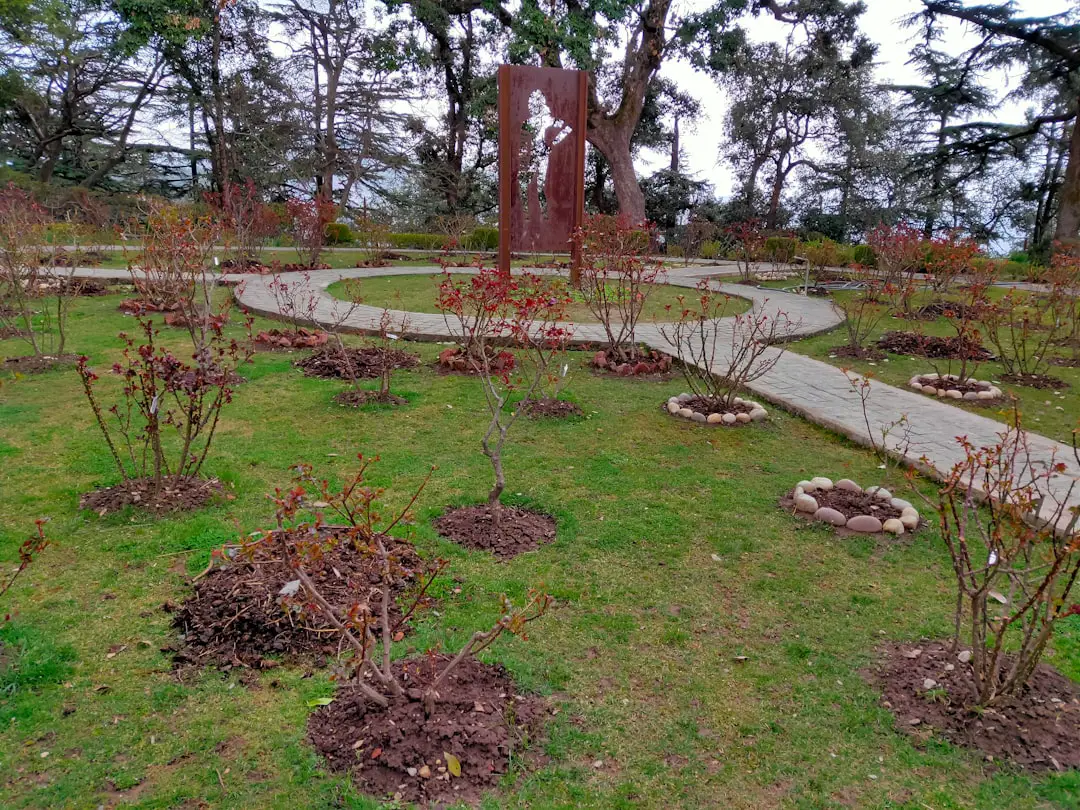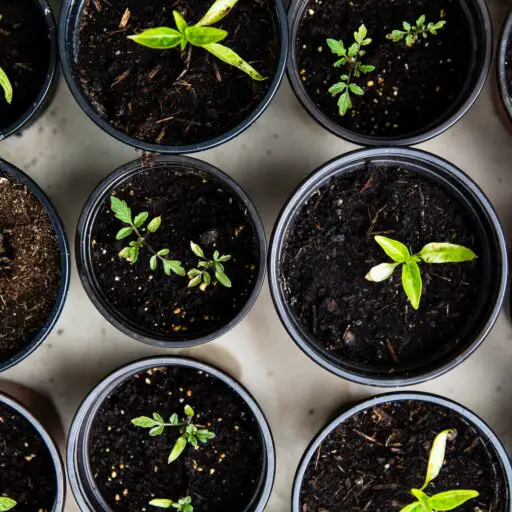Support our educational content for free when you purchase through links on our site. Learn more
Imagine this: you join a community garden expecting a peaceful oasis filled with fresh veggies and friendly neighbors. But soon, you find yourself tangled in unexpected conflicts, battling pests that seem to have a vendetta, and juggling time commitments that eat into your weekends. Sound familiar? Community gardens are wonderful spaces, but they come with their own set of hidden challenges that many don’t talk about upfront.
In this article, we’ll dig deep into 15 surprising disadvantages of community gardens—from interpersonal drama and resource disputes to accessibility issues and bureaucratic headaches. We’ll share insider tips from our seasoned gardeners at Community Gardening™ on how to spot these pitfalls early and navigate them like a pro. Whether you’re considering joining a community garden or already part of one, understanding these challenges will help you grow smarter, not just greener.
Key Takeaways
- Community gardens require significant time, effort, and cooperation—conflicts and uneven workload are common hurdles.
- Security issues like theft and vandalism can impact your garden’s success, so proactive measures are essential.
- Water management, soil quality, and pest control are shared challenges that need collective action.
- Accessibility and inclusivity remain overlooked areas that can exclude some community members.
- Clear communication, strong leadership, and well-defined rules are crucial to overcoming most disadvantages.
Ready to equip yourself with the best tools and knowledge? Check out top-rated gardening tools and raised bed kits to get started:
- Gardening Tools: Amazon | Walmart | Fiskars Official Website
- Raised Garden Bed Kits: Amazon | Home Depot
Table of Contents
- ⚡️ Quick Tips and Facts
- 🌱 The Roots of Shared Green Spaces: A Brief History of Community Gardens
- 🚧 Beyond the Bloom: Unearthing the Real Disadvantages of Community Gardens
- 1. 😠 The Green-Eyed Monster: Navigating Interpersonal Conflicts & Drama
- 2. ⏰ The Time Sink: Unexpected Demands on Your Schedule
- 3. ⚖️ The Great Divide: Unequal Labor Distribution & Free Riders
- 4. 📜 The Rulebook Rumble: Bureaucracy, Bylaws, and Boardroom Battles
- 5. 🐛 The Pest Parade: Shared Pests, Weeds, and Disease Challenges
- 6. 🚨 The Security Scramble: Vandalism, Theft, and Trespassers
- 7. 💸 The Funding Fiasco: Financial Hurdles and Membership Fees
- 8. 💧 The Water Woes: Access, Allocation, and Conservation Conundrums
- 9. 🧪 The Soil Saga: Quality Control and Contamination Concerns
- 10. 🛠️ The Tool Tangle: Sharing Equipment and Maintenance Headaches
- 11. 🔥 The Leadership Labyrinth: Organizational Challenges and Burnout
- 12. 🥕 The Crop Conundrum: Yield Disappointment and Harvest Disputes
- 13. 🗑️ The “Not My Problem” Syndrome: Lack of Ownership & Neglect
- 14. 🏛️ The Permitting Predicament: Navigating Local Regulations
- 15. ♿ The Accessibility Abyss: Physical Barriers and Inclusivity Issues
- ☀️ The Sunny Side of the Plot: Acknowledging the Benefits of Communal Gardening
- 🤔 Is a Community Garden Plot Right for YOU? Self-Assessment & Considerations
- 💪 Mitigating the Mayhem: Strategies to Overcome Community Garden Challenges
- 🚶♀️ When to Walk Away: Recognizing Red Flags and Alternative Green Solutions
- 🧠 Conclusion: Digging Deep, Growing Smart
- 🔗 Recommended Links
- 🔥 FAQ: Your Burning Questions Answered
- 📚 Reference Links
⚡️ Quick Tips and Facts
- Fact: Nearly 30% of community gardens experience conflicts among members. 🤯
- Tip: Establish clear guidelines and rules from the get-go to minimize disagreements. ✅
- Fact: Community gardens can increase access to fresh produce, especially in urban food deserts. 🍎
- Tip: Implement a task-sharing system to distribute the workload evenly. 💪
- Fact: Theft and vandalism are common concerns in community gardens. 🚨
- Tip: Foster relationships with the surrounding neighborhood to deter crime. 🤝
- Fact: Water management can be a major source of tension, especially during droughts. 💧
- Tip: Develop a comprehensive water management plan and use water conservation techniques. 🌿
- Fact: Community gardens can enhance social connections and reduce feelings of isolation. 🤗
- Tip: Hold regular meetings and workshops to promote communication and collaboration. 🗣️
🌱 The Roots of Shared Green Spaces: A Brief History of Community Gardens

Community gardens aren’t just a trendy, modern phenomenon; they have deep roots in history. The concept of shared gardening spaces dates back centuries, evolving in response to various social and economic needs. Let’s dig into the past and unearth the origins of these communal green havens.
From Allotment Gardens to Victory Gardens
The modern community garden movement can be traced back to 19th-century Europe, specifically the allotment gardens in England and Germany. These gardens were created to provide land for the working class to grow their own food, supplementing their diets and improving their quality of life.
During both World Wars, “Victory Gardens” sprang up across the United States, Canada, and the United Kingdom. These gardens were a patriotic effort to boost food production during wartime shortages. People transformed their backyards, parks, and even rooftops into vegetable gardens, contributing significantly to the war effort. According to the National WWII Museum, Victory Gardens produced up to 40% of the fresh fruits and vegetables consumed in the US during the war!
The Rise of Urban Agriculture
In the latter half of the 20th century, community gardens re-emerged as a response to urban decay, food insecurity, and a growing desire for community connection. Cities like New York, Chicago, and Detroit saw the rise of grassroots movements to reclaim vacant lots and transform them into vibrant green spaces. These gardens not only provided access to fresh produce but also served as catalysts for neighborhood revitalization.
Today, community gardens continue to thrive, adapting to the changing needs of our society. They represent a powerful blend of history, community, and sustainability, offering a tangible solution to some of the most pressing challenges we face. As we at Community Gardening™ believe, we can Grow Together through Community Gardening. And remember to check out our related article about 15 Surprising Benefits of Gardening You Need to Know in 2025 🌿 at https://www.community-gardening.org/benefits-of-gardening/ .
🚧 Beyond the Bloom: Unearthing the Real Disadvantages of Community Gardens
While community gardens are often lauded as idyllic havens of green, it’s crucial to acknowledge that they’re not without their challenges. Like any shared endeavor, community gardens can present a unique set of disadvantages that potential gardeners should be aware of. Let’s delve into the less rosy aspects of communal gardening.
1. 😠 The Green-Eyed Monster: Navigating Interpersonal Conflicts & Drama
One of the most common pitfalls of community gardens is the potential for interpersonal conflicts. When you bring together a diverse group of people with varying gardening styles, opinions, and personalities, clashes are almost inevitable.
- Differing Opinions: From organic vs. conventional gardening practices to preferred plant varieties, disagreements can arise over just about anything.
- Personality Clashes: Sometimes, personalities simply don’t mesh well. “Conflicts: Personality clashes, differences of opinion, and jealousy can arise when people work closely together,” according to Gardening Know How.
- Gossip and Drama: Unfortunately, community gardens can sometimes become breeding grounds for gossip and petty drama.
Solution: Establishing clear communication channels, setting ground rules for conflict resolution, and fostering a culture of respect can help mitigate these issues.
2. ⏰ The Time Sink: Unexpected Demands on Your Schedule
Community gardens require a significant time commitment, often more than initially anticipated. It’s not just about planting and harvesting; there’s weeding, watering, composting, and general maintenance to consider.
- Regular Maintenance: Gardens don’t maintain themselves! Expect to dedicate several hours each week to tending your plot and contributing to communal tasks.
- Unexpected Issues: Pests, diseases, and weather-related problems can demand immediate attention, throwing a wrench into your schedule.
- Meeting Obligations: Many community gardens require members to attend meetings, workshops, and other events.
Solution: Be realistic about your availability and choose a garden with a time commitment that aligns with your lifestyle.
3. ⚖️ The Great Divide: Unequal Labor Distribution & Free Riders
One of the most frustrating aspects of community gardens is the issue of unequal labor distribution. It’s common to find that a small group of dedicated individuals ends up carrying the bulk of the workload, while others slack off or contribute minimally.
- The “Not My Job” Mentality: Some members may adopt a passive attitude, assuming that others will take care of everything.
- Lack of Accountability: Without clear expectations and consequences, it can be difficult to motivate less engaged members.
- Resentment and Burnout: When a few individuals consistently shoulder the burden, it can lead to resentment and burnout.
Solution: Implement a system for tracking contributions, setting clear expectations, and addressing imbalances in a fair and transparent manner.
4. 📜 The Rulebook Rumble: Bureaucracy, Bylaws, and Boardroom Battles
While structure is necessary, some community gardens can become bogged down in bureaucracy and overly complex rules.
- Endless Meetings: Debates over minor issues can consume hours of valuable time.
- Confusing Bylaws: Navigating a maze of regulations can be frustrating and discouraging.
- Power Struggles: Disputes over leadership positions and decision-making authority can create tension and division.
Solution: Strive for a balance between structure and flexibility, and prioritize clear, concise communication.
5. 🐛 The Pest Parade: Shared Pests, Weeds, and Disease Challenges
In a community garden, your plot is only as healthy as the plots around you. Pests, weeds, and diseases can easily spread from one garden to another, creating a constant battle for control.
- Cross-Contamination: Even if you’re diligent about pest control, your efforts can be undermined by neighboring plots.
- Conflicting Approaches: Disagreements over pest management strategies (e.g., organic vs. chemical) can lead to conflict.
- Rapid Spread: Pests and diseases can quickly decimate entire sections of the garden if not addressed promptly.
Solution: Promote integrated pest management practices, encourage collaboration, and establish clear protocols for addressing outbreaks.
6. 🚨 The Security Scramble: Vandalism, Theft, and Trespassers
Unfortunately, community gardens are often vulnerable to vandalism, theft, and trespassing. “Theft of produce, tools, and vandalism are common problems in community gardens,” according to Gardening Know How.
- Produce Pilfering: The temptation of ripe fruits and vegetables can be too much for some passersby.
- Tool Theft: Garden tools are often left unattended, making them easy targets for thieves.
- Vandalism: Malicious acts of destruction can be disheartening and costly to repair.
Solution: Implement security measures such as fencing, lighting, and surveillance cameras, and foster a sense of community ownership to deter crime.
7. 💸 The Funding Fiasco: Financial Hurdles and Membership Fees
Maintaining a community garden requires financial resources, and securing adequate funding can be a constant challenge.
- Membership Fees: Many gardens charge membership fees to cover expenses, which can be a barrier for low-income individuals.
- Grant Competition: Securing grants and donations is a competitive process, and there’s no guarantee of success.
- Unexpected Costs: Unexpected repairs, equipment replacements, and other unforeseen expenses can strain the budget.
Solution: Explore diverse funding sources, such as grants, sponsorships, and fundraising events, and strive for financial transparency and accountability.
8. 💧 The Water Woes: Access, Allocation, and Conservation Conundrums
Water is a precious resource, and managing it effectively in a community garden can be tricky.
- Limited Access: Some gardens may have limited access to water, especially during droughts.
- Allocation Disputes: Disagreements over water usage can arise, particularly when resources are scarce.
- Conservation Concerns: Overwatering and inefficient irrigation practices can lead to water waste and environmental damage.
Solution: Develop a comprehensive water management plan, implement water conservation techniques, and promote responsible water usage among members.
9. 🧪 The Soil Saga: Quality Control and Contamination Concerns
The quality of the soil is crucial for successful gardening, but community gardens can face challenges in this area.
- Contamination Risks: Urban soils may be contaminated with heavy metals, pollutants, or other toxins.
- Nutrient Depletion: Over time, soil can become depleted of essential nutrients, requiring amendments and fertilization.
- Varying Soil Types: Different plots may have different soil types, requiring tailored approaches to soil management.
Solution: Conduct soil testing to identify potential contaminants, amend the soil with organic matter, and promote sustainable soil management practices.
10. 🛠️ The Tool Tangle: Sharing Equipment and Maintenance Headaches
Sharing garden tools and equipment can be convenient, but it also comes with its own set of challenges.
- Tool Shortages: During peak gardening season, there may not be enough tools to go around.
- Maintenance Neglect: Shared tools are often poorly maintained, leading to breakdowns and inefficiencies.
- Loss and Theft: Tools can easily get lost, misplaced, or stolen in a communal setting.
Solution: Implement a system for tracking tool usage, assigning maintenance responsibilities, and ensuring that tools are properly stored and secured.
11. 🔥 The Leadership Labyrinth: Organizational Challenges and Burnout
Effective leadership is essential for a successful community garden, but finding and retaining dedicated leaders can be difficult.
- Volunteer Burnout: Leadership roles often require a significant time commitment, leading to burnout and turnover.
- Lack of Expertise: Leaders may lack the necessary skills and knowledge to manage the garden effectively.
- Decision-Making Conflicts: Disagreements over leadership decisions can create division and undermine morale.
Solution: Provide training and support for leaders, distribute responsibilities, and foster a culture of shared leadership.
12. 🥕 The Crop Conundrum: Yield Disappointment and Harvest Disputes
Despite best efforts, community gardens don’t always produce abundant harvests.
- Pest and Disease Damage: Pests and diseases can decimate crops, leading to disappointment and frustration.
- Weather-Related Losses: Extreme weather events, such as droughts, floods, and frosts, can wipe out entire harvests.
- Harvest Disputes: Disagreements over who gets to harvest what can create tension and conflict.
Solution: Diversify crops, implement pest and disease management strategies, and establish clear guidelines for harvesting and sharing produce.
13. 🗑️ The “Not My Problem” Syndrome: Lack of Ownership & Neglect
A common issue in community gardens is a lack of individual ownership and responsibility.
- Unkempt Plots: Some members may neglect their plots, allowing weeds to proliferate and pests to thrive.
- Trash and Debris: Litter and debris can accumulate in communal areas, creating an unsightly and unsanitary environment.
- Broken Equipment: Damaged equipment may go unrepaired, hindering the garden’s overall functionality.
Solution: Foster a sense of community pride, assign individual responsibilities, and implement a system for addressing neglect and holding members accountable.
14. 🏛️ The Permitting Predicament: Navigating Local Regulations
Establishing a community garden often involves navigating a complex web of local regulations and permitting requirements.
- Zoning Restrictions: Zoning laws may restrict the types of activities allowed on a particular property.
- Building Codes: Construction of structures such as sheds, greenhouses, and fences may require permits and adherence to building codes.
- Water Rights: Access to water may be subject to regulations and restrictions.
Solution: Research local regulations thoroughly, consult with experts, and engage with local government officials to ensure compliance.
15. ♿ The Accessibility Abyss: Physical Barriers and Inclusivity Issues
Many community gardens lack accessibility features, making it difficult for individuals with disabilities to participate.
- Uneven Terrain: Uneven pathways and sloped surfaces can be challenging for people with mobility issues.
- Raised Bed Height: Raised beds may be too high or too low for individuals using wheelchairs or other mobility devices.
- Lack of Accessible Tools: Standard gardening tools may be difficult for people with limited strength or dexterity to use.
Solution: Advocate for accessible design features, such as paved pathways, raised beds of varying heights, and adaptive gardening tools, and promote inclusivity in all aspects of the garden.
☀️ The Sunny Side of the Plot: Acknowledging the Benefits of Communal Gardening
Despite the potential disadvantages, it’s important to remember that community gardens offer a wealth of benefits. From providing access to fresh, healthy food to fostering social connections and promoting environmental sustainability, community gardens can have a transformative impact on individuals and communities.
- Access to Fresh Produce: Community gardens provide an opportunity to grow your own fruits, vegetables, and herbs, ensuring access to nutritious food.
- Physical Activity: Gardening is a great form of exercise, promoting physical health and well-being.
- Social Connection: Community gardens bring people together, fostering friendships and building a sense of community.
- Environmental Benefits: Community gardens can improve air and soil quality, reduce stormwater runoff, and create habitat for wildlife.
- Educational Opportunities: Community gardens offer opportunities to learn about gardening, nutrition, and environmental stewardship.
For more on the benefits, see our category on Benefits of Community Gardens at https://www.community-gardening.org/category/benefits-of-community-gardens/ .
🤔 Is a Community Garden Plot Right for YOU? Self-Assessment & Considerations
Before diving headfirst into a community garden, it’s essential to take a step back and assess whether it’s the right fit for you. Consider the following questions:
- Do you have the time and commitment required? Community gardens demand a significant time investment.
- Are you comfortable working with others? Community gardens are collaborative spaces, requiring communication, compromise, and teamwork.
- Are you willing to abide by the garden’s rules and regulations? Community gardens typically have rules in place to ensure fairness and sustainability.
- Are you prepared to deal with potential conflicts and challenges? Community gardens are not without their challenges, so be prepared to navigate disagreements and setbacks.
- What are your gardening goals and expectations? Be realistic about what you hope to achieve in the garden.
💪 Mitigating the Mayhem: Strategies to Overcome Community Garden Challenges
While the disadvantages of community gardens can seem daunting, many of them can be mitigated with proactive strategies. Here are some tips for overcoming common challenges:
- Establish Clear Guidelines: Develop clear rules and regulations for the garden, covering everything from plot maintenance to conflict resolution. See our category on Community Garden Policies at https://www.community-gardening.org/category/community-garden-policies/ .
- Promote Open Communication: Encourage open and honest communication among members, and establish channels for addressing concerns and resolving conflicts.
- Foster a Sense of Community: Organize social events, workshops, and other activities to build relationships and foster a sense of community. See our category on Community Garden Events at https://www.community-gardening.org/category/community-garden-events/ .
- Implement Sustainable Practices: Promote sustainable gardening practices, such as composting, water conservation, and integrated pest management.
- Secure Adequate Funding: Explore diverse funding sources and strive for financial transparency and accountability.
🚶♀️ When to Walk Away: Recognizing Red Flags and Alternative Green Solutions
Sometimes, despite your best efforts, a community garden may not be the right fit for you. Here are some red flags to watch out for:
- Constant Conflict: If the garden is plagued by constant conflict and drama, it may be time to move on.
- Lack of Support: If you feel unsupported by the garden’s leadership or other members, it may be difficult to thrive.
- Unrealistic Expectations: If the garden’s expectations are unrealistic or unsustainable, it may be best to seek alternative solutions.
If a community garden isn’t working out, consider these alternative green solutions:
- Home Gardening: Start your own garden at home, even if you only have a small space.
- Container Gardening: Grow plants in containers on your balcony, patio, or windowsill.
- Joining a Gardening Club: Connect with other gardeners in your area through a gardening club or organization.
Conclusion: Digging Deep, Growing Smart

Community gardens are like a patchwork quilt—beautiful, vibrant, and full of potential, but stitched together with threads of complexity and challenge. As we’ve explored, these shared green spaces come with a bouquet of disadvantages: interpersonal conflicts, time commitments, resource disputes, and even the occasional pest parade. Yet, these hurdles don’t overshadow the immense benefits—from fresh produce and physical activity to social bonding and environmental stewardship.
At Community Gardening™, we’ve seen firsthand that success lies in preparation and communication. Knowing the pitfalls ahead allows you to navigate the garden maze with confidence, turning potential weeds into opportunities for growth. Whether it’s setting clear rules, fostering community spirit, or embracing sustainable practices, you can cultivate a thriving garden—and a thriving community.
So, is a community garden right for you? If you’re ready to invest time, patience, and a collaborative spirit, the rewards can be rich and deeply satisfying. But if you find the red flags too daunting, remember there are plenty of alternative ways to get your hands dirty and your soul nourished.
In the end, community gardening is about growing together—through the ups and downs, the sun and the rain. Ready to dig in?
Recommended Links
Looking to gear up for your gardening adventure or deepen your knowledge? Check out these trusted resources and tools:
-
Gardening Tools:
Amazon | Walmart | Fiskars Official Website -
Raised Garden Bed Kits:
Amazon | Home Depot -
Gardening Books:
FAQ: Your Burning Questions Answered

What are the common challenges faced by community gardens and how can they be overcome?
Community gardens often face interpersonal conflicts, unequal labor distribution, theft and vandalism, and resource management issues like water and soil quality. Overcoming these challenges requires clear communication, establishing rules, and shared responsibility. For example, setting up a task rotation schedule can ensure equitable workload distribution, while installing fencing and lighting can deter theft. Regular meetings foster transparency and help resolve disputes before they escalate.
Read more about “How Do Community Gardens Help the Community? 8 Surprising Ways 🌿 (2025)”
How do community gardens impact local ecosystems and what are the potential environmental drawbacks?
Community gardens generally have a positive environmental impact by improving soil health, increasing biodiversity, and reducing urban heat islands. However, potential drawbacks include soil contamination from previous land use, overuse of water resources, and spread of pests or diseases among densely planted areas. Mitigation strategies include soil testing before planting, implementing water conservation techniques like drip irrigation, and practicing integrated pest management to reduce chemical use.
What are the social and economic disadvantages of participating in a community garden, and who may be excluded?
Social disadvantages include conflicts among members, lack of inclusivity, and time demands that may exclude those with busy schedules or physical limitations. Economically, membership fees and the cost of supplies can be barriers for low-income individuals. Accessibility issues may exclude people with disabilities if the garden lacks adaptive features. To combat this, gardens can offer sliding-scale fees, design accessible plots, and foster an inclusive culture that welcomes diverse participants.
Can community gardens create conflicts among neighbors or community members, and if so, how can these conflicts be resolved?
Yes, conflicts can arise due to differing gardening philosophies, resource competition, or boundary disputes. Resolution involves open dialogue, mediation, and clear governance structures. Establishing a community garden committee with representatives from all stakeholders can help manage disputes. Encouraging empathy and focusing on shared goals often turns conflicts into opportunities for stronger community bonds.
How can community gardens ensure sustainability and long-term success despite challenges?
Sustainability hinges on strong leadership, diverse funding, and community engagement. Rotating leadership roles prevents burnout, while securing grants and donations eases financial strain. Hosting educational workshops and social events keeps members motivated and connected. Regular evaluation and adaptation of garden policies ensure the garden evolves with the community’s needs.
Reference Links
- Gardening Know How: Pros and Cons of Community Gardening
- Houzz Discussion on Community Garden Negatives: The Negatives of Running a Community Garden
- Community Gardening™: What Are the 10 Hidden Disadvantages of Community Gardens …
- National WWII Museum: Victory Gardens
- Fiskars Official Website: Fiskars Gardening Tools
- Home Depot: Raised Garden Beds
- Amazon Gardening Tools: Amazon Gardening Tools Search
Ready to embrace the green life with eyes wide open? Remember, every garden has its weeds—but with the right mindset and tools, you can cultivate a flourishing community that grows stronger together! 🌿🌻


